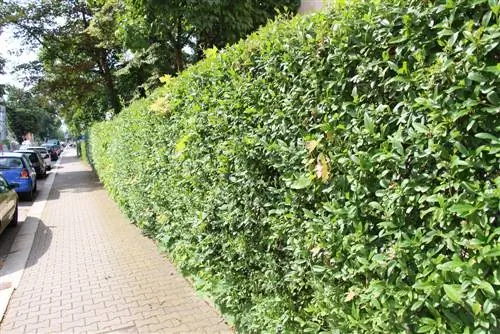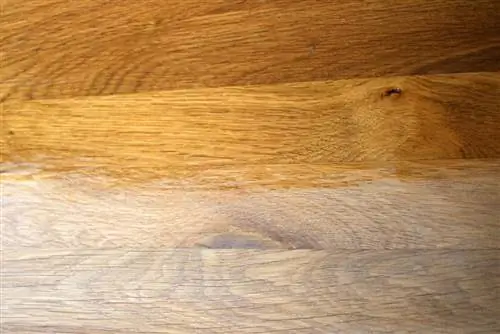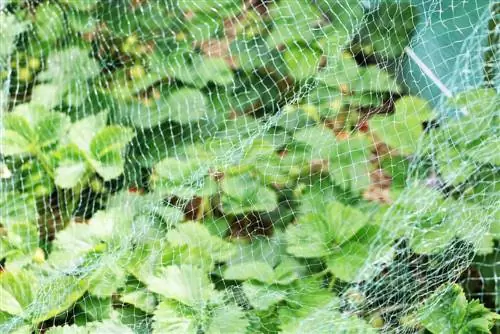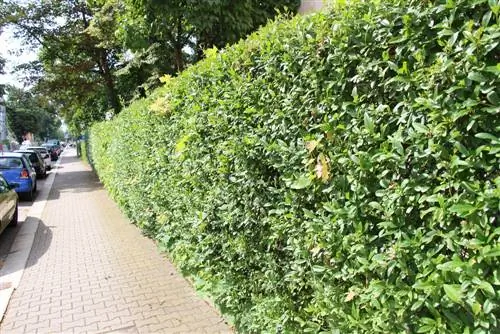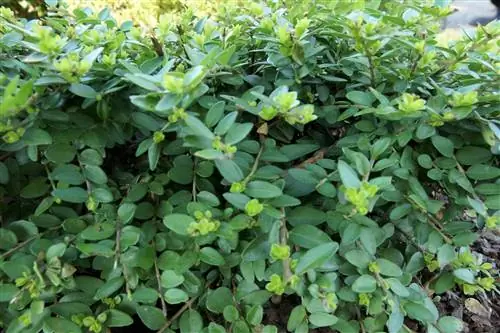- Author admin [email protected].
- Public 2023-12-17 03:39.
- Last modified 2025-01-24 12:45.
When planting a hedge, the hobby gardener must be aware that hedge trimming is regulated by law in Germany. The Federal Nature Conservation Act specifies the exact point in time when each hedge may be cut back. To protect breeding birds, heavy pruning of the hedge is prohibited throughout the summer. Anyone who does not follow this ban is committing an administrative offense and is punishable by high fines. However, the growths may be trimmed to shape and maintain the hedge.
Ban
Breeding birds often use dense hedges to build their nests there. These feel so disturbed by a strong hedge trimming that they leave the nest and give up completely. The brood left behind starves or falls out of the nest in search of its parents. In addition, predators can better discover the offspring in a hedge that is too thin because the protective branches are missing. To prevent this, the times for cutting hedges are regulated by law.
- Protection affects the breeding and nesting season of birds
- Requirements according to Section 39 Paragraph 5 No. 2 Federal Nature Conservation Act
- Hedge cutting is prohibited from March 1st to September 30th
- Radical pruning is not allowed
- It must not be cut into the old wood
- During this time, the complete removal of hedges is also prohibited
- There is a risk of fines of up to 50,000 euros
hedge cutting
Outside the summer season, cutting back the hedge is permitted without any further restrictions. For many trees, hedge trimming is preferred in the winter months. During this time, the hedge is guaranteed to be free of nesting birds, so the hedge residents benefit from this gentle approach. The following spring, the hedge again has thick foliage and offers the birds sufficient protection for the nest and the offspring. To avoid problems, the hedge owner should always coordinate pruning with the requirements of the Federal Nature Conservation Act.
- Radical pruning possible from the beginning of October to the end of February
- Ideal is to trim the hedge in winter before budding
- In autumn and winter the trees are in the dormant phase
- Pruning up to two thirds of the hedge can be carried out
Tip:
If the hedge trimming is planned in early spring or autumn, then the hedge should be checked for active nests. Some parent birds start breeding very early or very late, when the weather is already pleasantly warm or still good enough.
Care measures
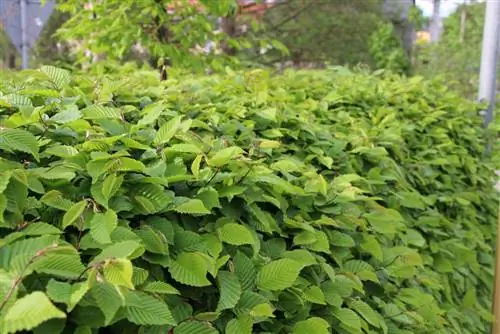
Since many birds build their nests in hedges, they enjoy special protection through legal requirements. However, if you are planning a shaping cut for care, you can do this carefully during the birds' closed season. However, if there is a bird's nest in the hedge, it must not be cut back as a maintenance measure.
- Considerate shaping and care cuts are permitted at any time
- The growth since the last pruning can be removed
- Only remove the newly sprouted tips
- Do not cut back into the old wood
- Be sure to check beforehand to see whether there is a bird's nest in the hedge
- Check all affected areas carefully
- Always proceed in sections so that hedge dwellers can still escape
- Only prune in the late afternoon, when the sun is significantly lower
- Leave branched branches, these are ideal places for a nest
Border and neighbor rights
In addition to the requirements in the Federal Nature Conservation Act, there are other laws that affect hedge trimming. This includes border and neighboring rights, which are set out differently in each federal state. As a rule, hedge trimming must be carried out at the latest when the prescribed distance to the neighboring property is significantly less than the required distance. If a hedge and its excessive growth impair traffic safety on public roads or paths, then the responsible municipality or authority can demand a radical pruning.
- Plan a hedge with sufficient distance to the neighboring property
- Note and check annual hedge growth
- If there are disruptions in public spaces, cutting back is required by law
- Massive disturbances often lead to the legally required removal of the entire hedge
Conclusion
Many hobby gardeners are not aware that growth and pruning are regulated by law before planting a hedge. Clear regulations apply both to protect hedge dwellers and to maintain boundaries with neighbors and with streets and paths. The hedge must not be radically pruned between the beginning of March and the end of September. During this period, however, careful pruning is permitted to maintain the shape of the hedge. However, only the growing tips may be trimmed; cutting back may not be carried out into the old wood. Autumn and winter are ideal for vigorous pruning, even before the new shoots appear. During this period, the hedge plants are in a resting phase and can be pruned as desired. In spring the hedge sprouts again and offers the bird world sufficient protection when breeding. The hedge should also be completely removed during this time.

